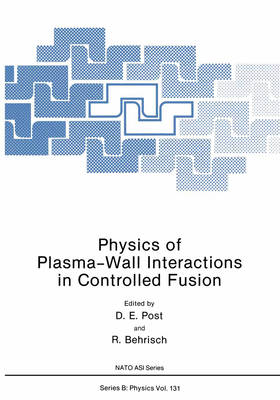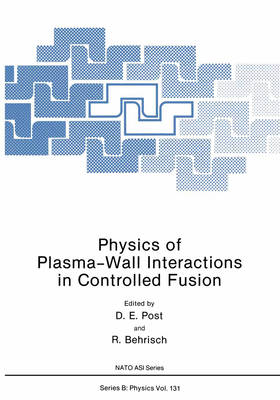
Door een staking bij bpost kan je online bestelling op dit moment iets langer onderweg zijn dan voorzien. Dringend iets nodig? Onze winkels ontvangen jou met open armen!
- Afhalen na 1 uur in een winkel met voorraad
- Gratis thuislevering in België vanaf € 30
- Ruim aanbod met 7 miljoen producten
Door een staking bij bpost kan je online bestelling op dit moment iets langer onderweg zijn dan voorzien. Dringend iets nodig? Onze winkels ontvangen jou met open armen!
- Afhalen na 1 uur in een winkel met voorraad
- Gratis thuislevering in België vanaf € 30
- Ruim aanbod met 7 miljoen producten
Zoeken
Omschrijving
Controlled thermonuclear fusion is one of the possible candidates for long term energy sources which will be indispensable for our highly technological society. However, the physics and technology of controlled fusion are extremely complex and still require a great deal of research and development before fusion can be a practical energy source. For producing energy via controlled fusion a deuterium-tritium gas has to be heated to temperatures of a few 100 Million °c corres- ponding to about 10 keV. For net energy gain, this hot plasma has to be confined at a certain density for a certain time One pro- mising scheme to confine such a plasma is the use of i tense mag- netic fields. However, the plasma diffuses out of the confining magnetic surfaces and impinges on the surrounding vessel walls which isolate the plasma from the surrounding air. Because of this plasma wall interaction, particles from the plasma are lost to the walls by implantation and are partially reemitted into the plasma. In addition, wall atoms are released and can enter the plasma. These wall atoms or impurities can deteriorate the plasma performance due to enhanced energy losses through radiation and an increase of the required magnetic pressure or a dilution of the fuel in the plasma. Finally, the impact of the plasma and energy on the wall can modify and deteriorate the thermal and mechanical pro- perties of the vessel walls.
Specificaties
Betrokkenen
- Auteur(s):
- Uitgeverij:
Inhoud
- Aantal bladzijden:
- 1183
- Taal:
- Engels
- Reeks:
Eigenschappen
- Productcode (EAN):
- 9781475700695
- Verschijningsdatum:
- 15/01/2014
- Uitvoering:
- Paperback
- Formaat:
- Trade paperback (VS)
- Afmetingen:
- 178 mm x 254 mm
- Gewicht:
- 2281 g

Alleen bij Standaard Boekhandel
+ 181 punten op je klantenkaart van Standaard Boekhandel
Beoordelingen
We publiceren alleen reviews die voldoen aan de voorwaarden voor reviews. Bekijk onze voorwaarden voor reviews.











